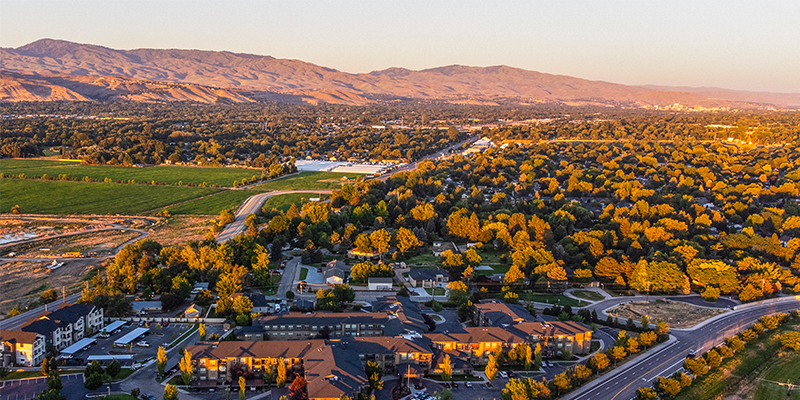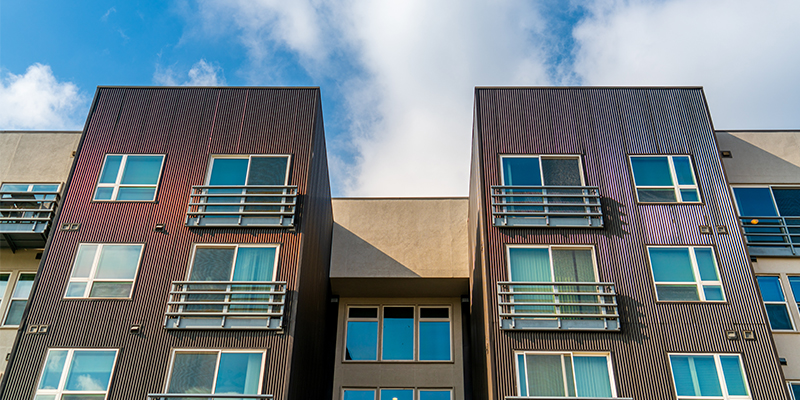More and more Americans are moving to a different state, often to one inland and less densely populated but with great real estate options. The highest net migration is seen in Idaho, Montana and Vermont, plus Maine and other states offering plenty of space and housing, a trend that fuels the local real estate sectors.
A record 7.9 million Americans swapped states in 2021, 5.8% more than in the year before, and 2022 saw a further increase. By contrast, relocating within the same state decreased year-over-year by 7.7% in 2021. A recent StorageCafe study ranked states by net migration figures, analyzing the number of people arriving minus those leaving for every 1,000 residents.
New England and the Mountain West region are joined in popularity by states ranging from South Carolina to Nevada. Many relocate from often-expensive places like California or New York; better housing costs and availability – boosted wherever there is generous self-storage provision – are key drivers of interstate migration. Many people on the move don’t necessarily give up good salaries, not least because the enduring work-from-home trend can make anywhere in the country an option.
Idaho Is No. 1 for Inter-State Migration
Idaho is the most popular destination for Americans moving from state to state, having a net migration figure of 25 people. By contrast, Texas also sees plenty of incomers, but its per-population number is only a fifth of Idaho’s. Californians arrive more than any others, swapping an average rent of $2,537 for Idaho’s average of $1,595, according to Yardi Matrix data.
In around half the nation, new arrivals’ household incomes are larger than those leaving, but Idaho is one of only three where this gain is more than $10,000. Migration patterns suggest Idahoans may be aging, as incomers from other states are three years older than those leaving, the highest age differential nationwide. Helping them manage their new living space, Idaho self-storage space also gets gold with a provision of more than 16 square feet per resident.
New England Spiking in Popularity
Vermont, with fewer residents than any state but Wyoming, is on a path to a larger population. In 2021, the numbers of incomers were double those leaving, resulting in no fewer than 24 new Vermonters per 1,000 locals and a No. 2 position for net migration. As with its neighbors, the Green Mountain State’s current surge in popularity comes in the wake of merely average population increases.
But common migration-driving factors are seen across New England right now. Maine, the No. 5 net-migration state with a figure of 15 new people for every 1,000 locals, also saw two new residents for every one leaving. Inventory may be the key, as only Maine and Vermont provide more than one housing unit for every two residents.
Provision drives enthusiasm for home ownership. New Mainers, 59% of them, lead all other states’ incomers for buying a property in their first year, accompanied by 49% and 54% of newcomers to Vermont and New Hampshire, respectively. New England states generally have way-above-average levels of home working to match their incomers’ high home ownership levels.
Montana’s New Arrivals Are Younger and Get Even Better Real Estate Options
Montana was the No. 3 state for net migration with a score of 18 new arrivals per 1,000 locals. And again, they may come for more plentiful real estate possibilities. There is a high provision of 0.47 housing units per resident here, while Wyoming has the same, and added to Idaho’s 0.41, this makes the Mountain West a more inviting option than California, for example, with just 0.37 units per person.
Baby boomers are eying Montana, with 44% of those making the journey from California aged between 56 and 74. However, the cohort aged 24-38 – approximately the millennials – is the generation most often coming from Washington State and Colorado, and they would be giving up average rents of $1,991 or $1,897 for Montana’s average of $1,578. The average age of all Montana’s new arrivals is 38, a year younger than those who leave.
Other Spacious U.S. States Drawing Newcomers
Americans appear to after more space and fresh air these days. Expansive Nevada and Arizona, with low population densities, are in the top 10 of popular states to move to, both seeing net migration of more than 12 per 1,000 residents. North Dakota, which rivals Montana and Wyoming (and Alaska) for population sparsity, also entered the top 10 with a net migration figure of over 12 people.
South Carolina, with the lowest population density among Southeastern states, is in the net-migration ranking at No. 4, with a score of 15 people, who clearly appreciate the reasonable average rents of $1,567 per month. The 47% of them who become homeowners in their first year here can extend their living space cost-effectively with the 10 square feet of South Carolina self-storage space offered per resident.
Judging by their relocation choices, it’s possible that many Americans on the move just want to go skiing! However, lower-priced and more plentiful housing options will be significant factors for them. States trending in terms of net migration can look forward to seeing further vitality in their real estate markets, including residential, mixed-use and commercial sectors that benefit from increased populations.
Read more about migration trends in the full report from StorageCafe.








